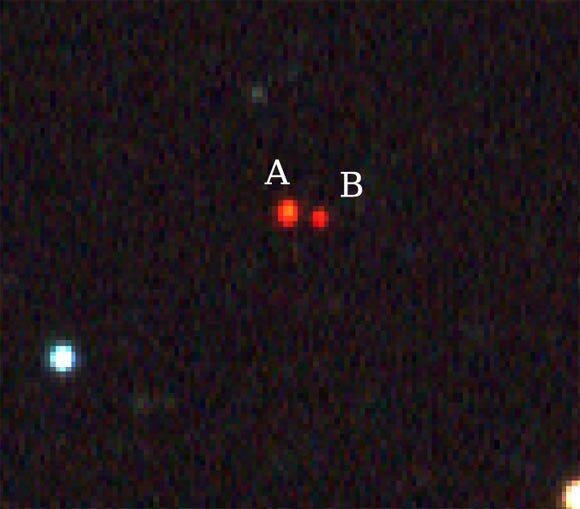A team of astronomers has discovered a rare pair of brown dwarfs that has the widest separation of any brown dwarf binary system.
At an estimated distance of 130.5 light-years, CWISE J014611.20-050850.0AB has a projected separation of 129 AU (astronomical units), or 129 times the distance between the Sun and the Earth, making it the widest-separation brown dwarf pair found to date.
Brown dwarfs are celestial objects that are smaller than a normal star. These objects are not massive enough to sustain nuclear fusion and shine like normal stars, but are hot enough to radiate energy.
The gravitational force between a pair of brown dwarfs is lower than for a pair of stars with the same separation, so wide brown dwarf binaries are more likely to break up over time, making this pair of brown dwarfs an exceptional find.
“Because of their small size, brown dwarf binary systems are usually very close together. Finding such a widely separated pair is very exciting,” said study’s first author Emma Softich, an undergraduate student at Arizona State University.
In the study, the researchers inspected images of brown dwarfs discovered by the Backyard Worlds: Planet 9 citizen science project, where companion brown dwarfs may have been overlooked.

This image from the Dark Energy Survey
shows the CWISE J0146-0508AB brown dwarf pair.
In doing so, they discovered CWISE J014611.20-050850.0AB (CWISE J0146-0508AB for short), a wide brown dwarf binary located 130.5 light-years away in the constellation of Cetus.
Based on its significant proper motion, one of the system members, CWISE J0146-0508A, was previously submitted as an object of interest by citizen scientists Nikolaj Stevnbak, Sam Goodman, Melina Thévenot, Dan Caselden, and Frank Kiwy.
The astronomers then used data from the Dark Energy Survey (DES) to confirm that it was indeed a brown dwarf pair.
“Wide, low-mass systems like CWISE J014611.20-050850.0AB are usually disrupted early on in their lifetimes, so the fact that this one has survived until now is pretty remarkable,” said study’s co-author Dr. Adam Schneider, an astronomer with the U.S. Naval Observatory and George Mason University.
The team hopes this discovery will allow astronomers the chance to study brown dwarf binary systems and to develop models and procedures that will help in recognizing more of them in the future.
“Binary systems are used to calibrate many relations in astronomy, and this newly discovered pair of brown dwarfs will present an important test of brown dwarf formation and evolution models,” said co-author Jennifer Patience, Softich’s adviser at ASU.
Sources: https://iopscience.iop.org/article/10.3847/2041-8213/ac51d8

